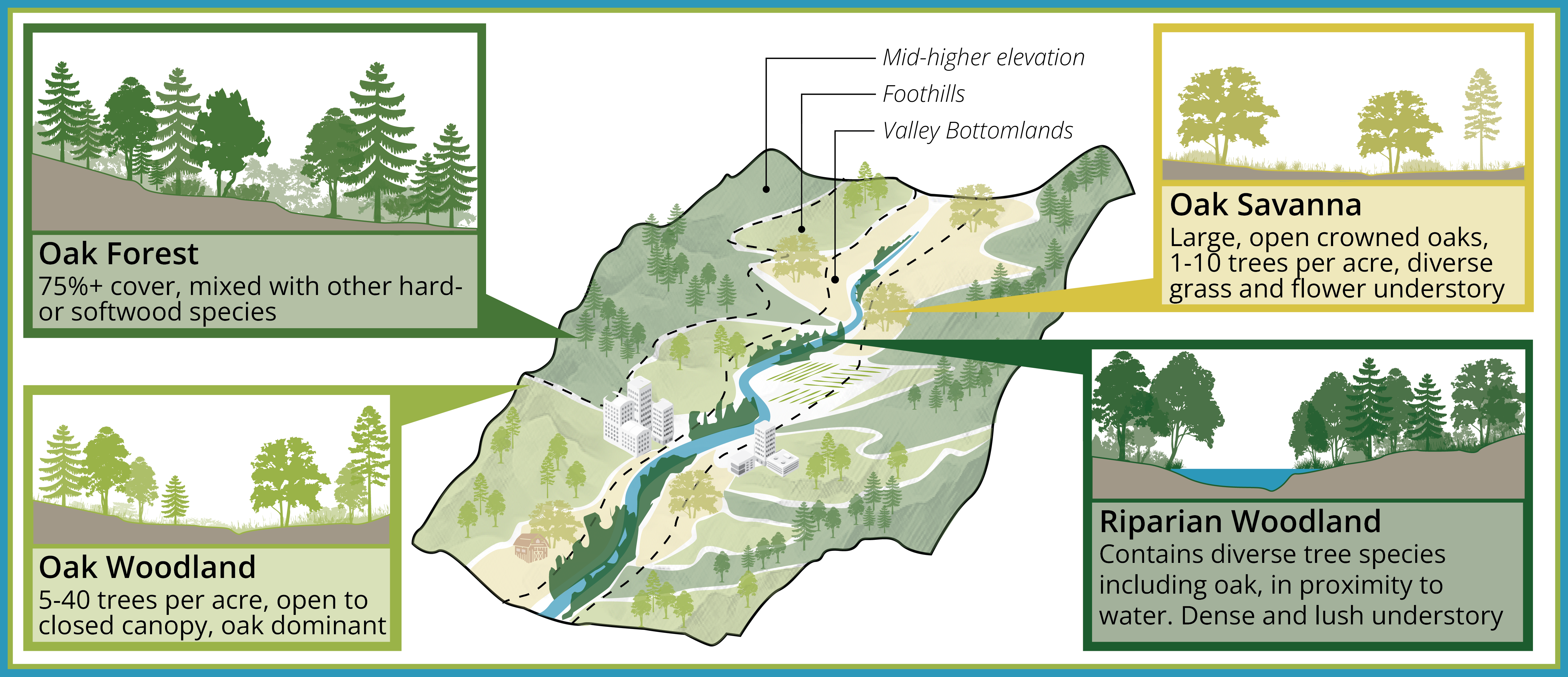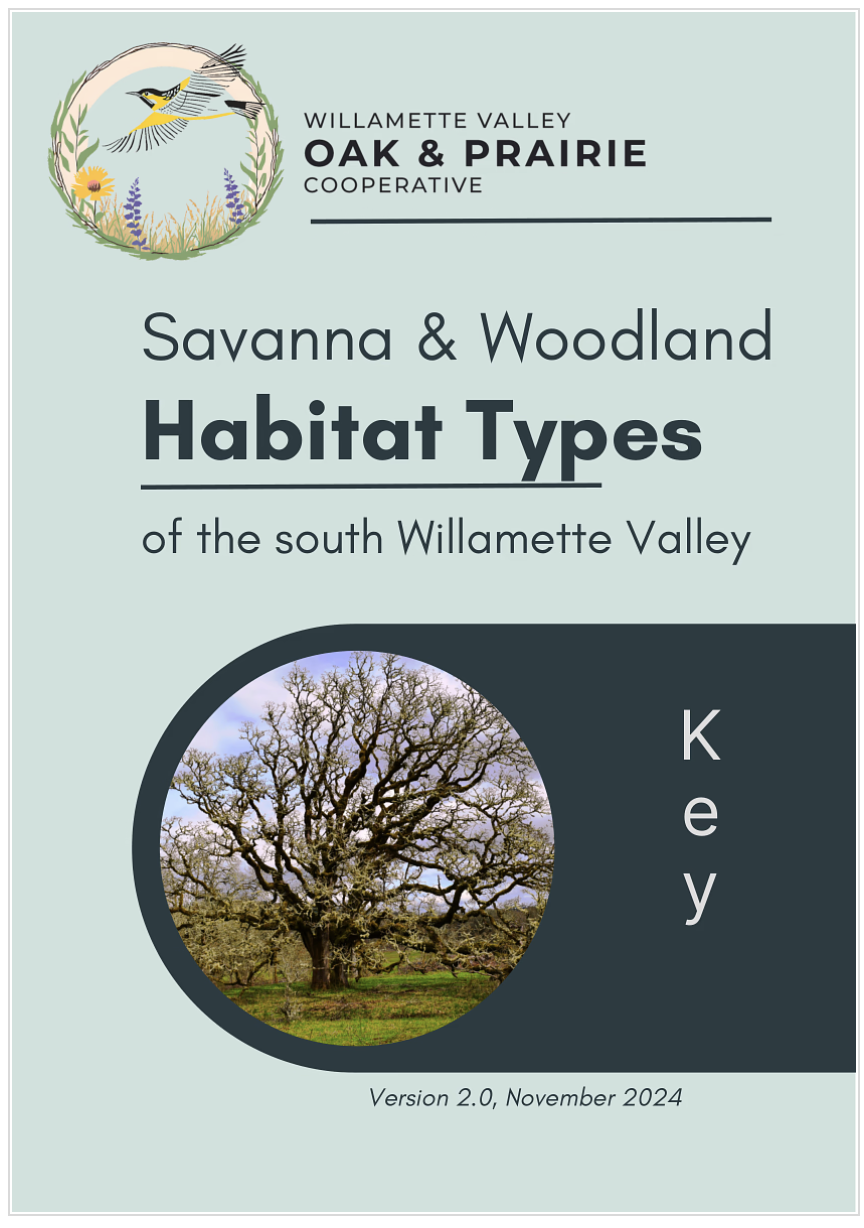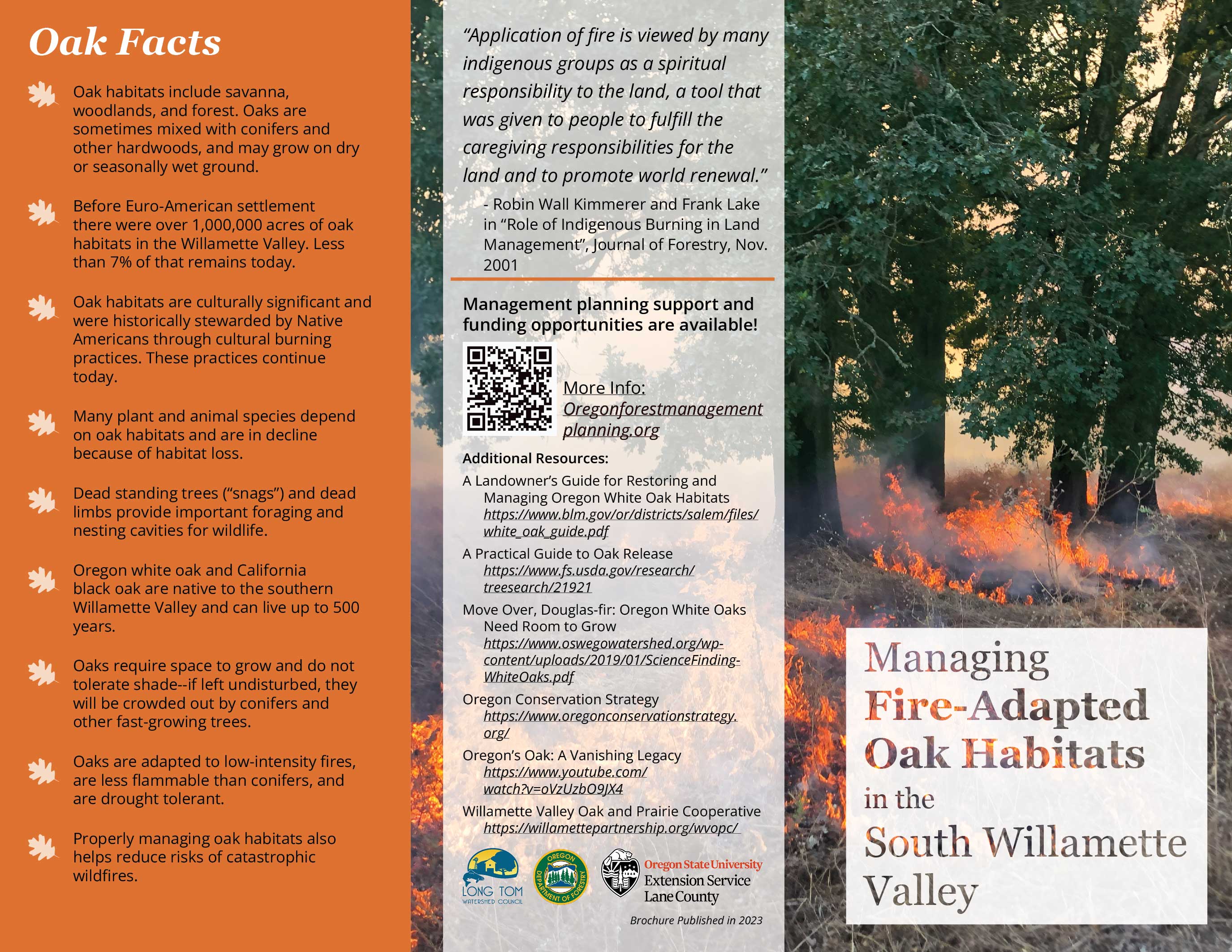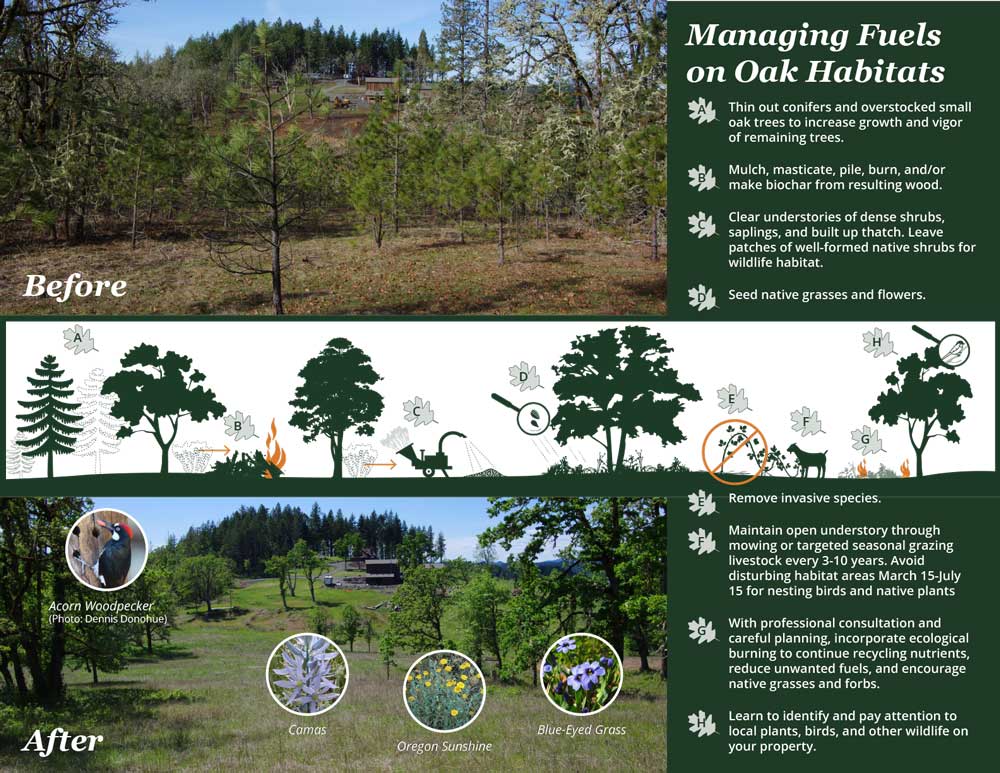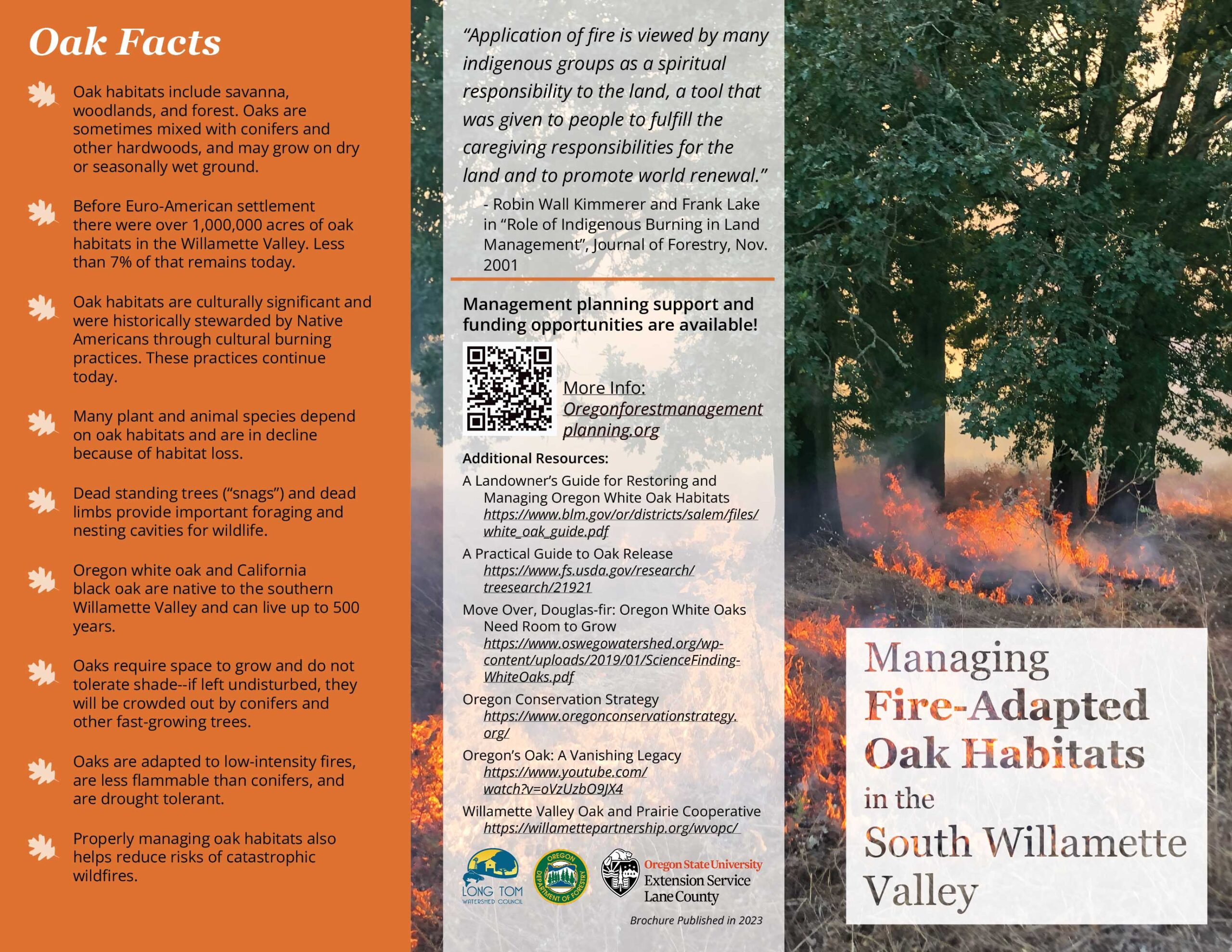Our Region
Oak and prairie habitats in the Willamette Valley are some of the most iconic, culturally important, and imperiled in Oregon.
Restored open oak woodland. Credit: Long Tom Watershed Council
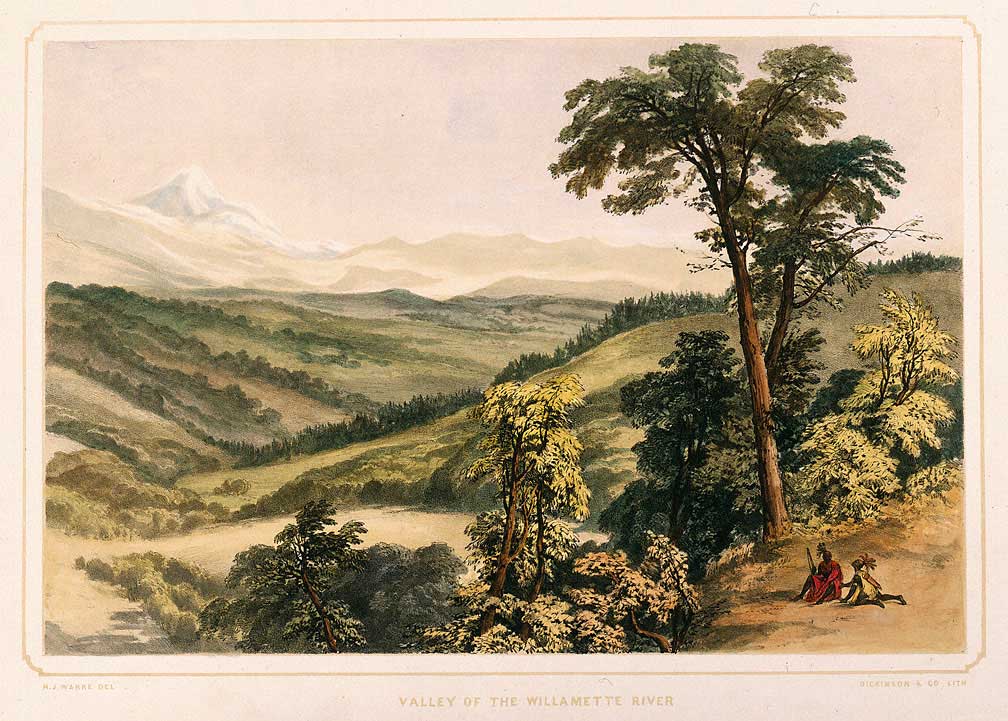
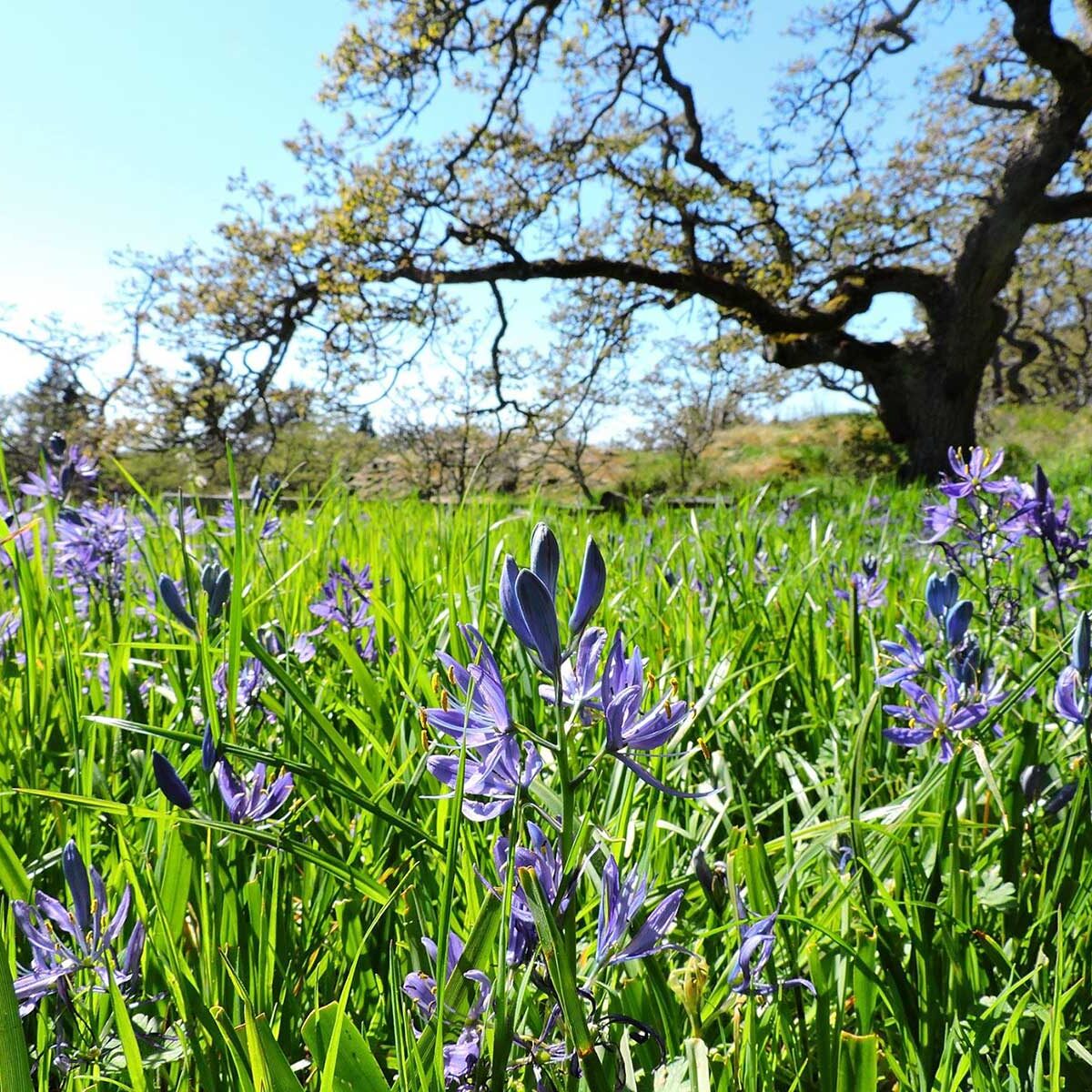
Today
Today, it is estimated that oak habitat in the Valley is found on under ten percent of its pre-settlement area while prairie is found on less than two percent. Much of what remains is fragmented, isolated, and heavily impacted by fast-growing conifers and invasive species. Despite 170 years of loss and fragmentation, significant and timely habitat conservation opportunities are still before us.
Thoiught #2
These opportunities, if acted upon, will have essential and lasting benefits both to Oregon’s natural and human communities. Without swift action, however, this window of opportunity will close. In addition to the continued loss of biodiversity, additional oak-prairie dependent species could be added to the endangered species list, complicating conservation and creating new barriers to economic development. More importantly, we risk the loss of some of the signature features of this landscape and an important part of what has long made the Willamette Valley such a unique and special place to live.
Management strategies
For more guidance on how to manage oak habitats, see the Resources page.
Tribal connections
Learn more about contemporary Tribes and Indigenous culture at the following sites.
-
Confederated Tribes of Siletz Indians
-
Confederated Tribes of Grand Ronde Community of Oregon
-
Confederated Tribes of Warm Springs
-
Confederated Tribes of Coos, Lower Umpqua, and Siuslaw Indians
-
Quartux Journal

